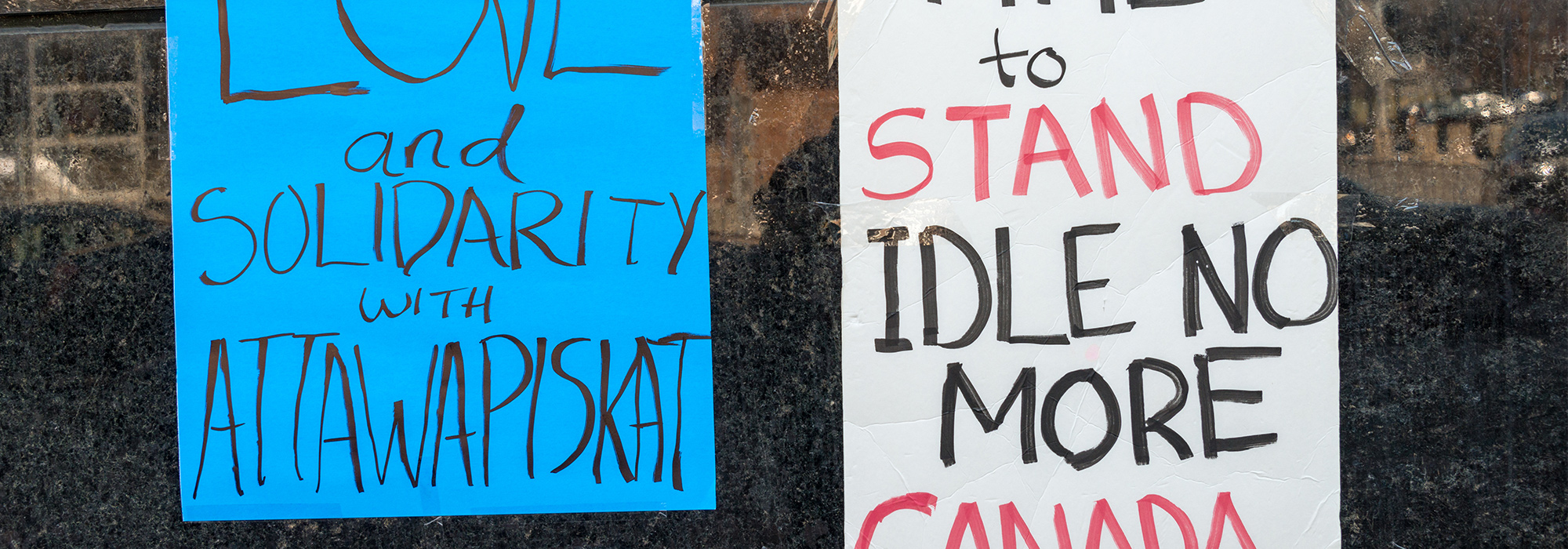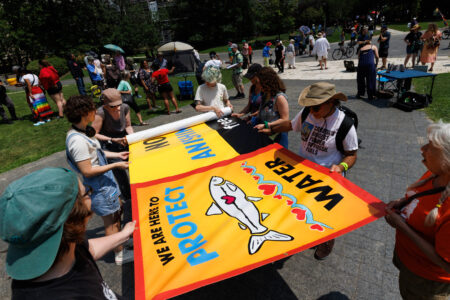
While Idle No More has captured the attention of the Canadian public and the global media, the response to the protests has included frustration that it is difficult to determine exactly what it is that Aboriginal people want. Is it a meeting with the Governor General and the Prime Minister? A repeal of Bill C-45? To get rid of the Indian Act? All of the above? None of the above? While the protest movement has provided a welcome platform for Aboriginal people to air grievances and have a listening audience, it is not enough. Everyone acknowledges the Indian Act is an archaic and colonial piece of legislation. Everyone knows that Aboriginal and treaty rights are not being recognized and respected in Canada. The question is what is to be done about it?
In all the clamour of Idle No More, the message has focused on outward-looking problems: what is wrong with the relationship with the federal government; what is wrong with the Aboriginal and treaty relationship; what is wrong with the Indian Act. What is needed instead is for Aboriginal people to put forward-looking — and inward-looking — solutions on the table.
I am proposing we need nothing more complicated than getting First Nations to acknowledge the power they already have to establish their own forms of governance in order to engage with the Canadian government in a nation-to-nation relationship, based on the principles of recognition and respect. We are in a new era of Aboriginal-Crown relations. It is time for First Nations to fully realize it and usher it in.
When I use the word governance, I am not talking about the municipality-like, limited governance structure recommended by the federal government and groups like the Canadian Taxpayers Federation. I refer to a governance structure based on First Nations jurisdiction and laws, traditions and culture and that is developed and supported by people who make up our nations — what has been bandied about as “the grassroots.” It’s time we, as First Nations people, sit down and get organized.
The courts have already recognized our inherent Aboriginal and treaty rights. Case after case has come out in favour of First Nations. A cursory summary of some of the key decisions will highlight the landmark shift in favour of First Nations.
Back in 1973, in the Calder case, for the first time the courts acknowledged that Aboriginal title to land existed prior to colonization. The case laid the groundwork for the Nisg’a Treaty and other modern-day treaties in Canada. The Sparrow decision in 1990 set out criteria for determining whether an Aboriginal right can be considered to be an existing right. The Delgamuukw/Gisday’wa case was precedent setting because the Court, for the first time in Canadian legal history, confirmed that Aboriginal title entails legal rights to the land, the right to use the land at our own discretion, including the economic component, and that the government has a duty to consult and accommodate First Nations where there could be an infringement of these rights.
The Haida and Taku cases determined that the Crown’s duty to consult and accommodate Aboriginal rights exist, even if Aboriginal title has not yet been proven in a court of law and that consultation has to occur at the “strategic level of government.” And in 2005, in the Mikisew case, the Court ruled that when the Crown infringes on Aboriginal and treaty rights, it cannot rely on its own legislation as a justification for infringement.
We need to take advantage of these rulings and other acknowledgements of our inherent Aboriginal and treaty rights in a way we have not done up to now. We do not require permission to exercise our right to be self-governing. We do not need a meeting with the Prime Minister and the Governor General to steward our traditional lands. We do not need to amend the Indian Act in order to build sustainable economies from our lands. We need to take back our rightful place on our territories.
If we do indeed have inherent Aboriginal and treaty rights, and the Crown must recognize them and consult with First Nations at “the strategic level of government,” then it is up to First Nations to make sure we have a coherent and cohesive set of laws, policies and procedures with which to engage the Crown as nation to nation. Otherwise, we are not in a position to be equal partners or to exercise our own selfdetermination, and the systemic effects of the Indian Act will continue.
So how do we do this? It goes to the heart of what Idle No More stands for: listen to the grassroots. We need to realize and acknowledge the power that we have. We need to promote it and educate our people about it. We need to sit down and seriously talk to each other — if we can’t talk to one another, we lose the ability to govern ourselves — listening to all perspectives and reconciling among ourselves.
We need to look at our traditions, at the ways that we governed ourselves before the Indian Act and reserves were imposed on us. We need to build consensus on a new way of governing ourselves,based on a common vision. And we need to take all of this and organize ourselves so that we have strong governments that give us the tools to exercise jurisdiction over our own lands, our own people, rebuild our economies and take back responsibilities for ourselves.
We need to acknowledge the powers we possess.
For many First Nations, this is not going to be easy. I have had the privilege of supporting First Nations on their paths toward self-governance, mainly through the National Centre for First Nations Governance. There are some small steps that have been taken, such as developing custom election codes and community councils and consultation protocols. But some nations are moving beyond these changes, moving beyond the Indian Act altogether and establishing their own nation-based constitutions and fully expressing their inherent Aboriginal and treaty rights.
What I have seen is a shift in how communities are beginning to see their own nations. They are moving beyond the status quo and I expect that we will see more of this as First Nations begin to realize the full extent of their power and rights.
There are many paths to self-determination but we have to agree that it is our responsibility. We are, and always have been, sovereign nations. Our sovereignty has survived colonialism and Confederation and it has not gone away. Now is the time to affirm and exercise that sovereignty. And when we accomplish this, we can stand up and say, “Here we are and this is how we want to engage. This is the relationship we want.”







